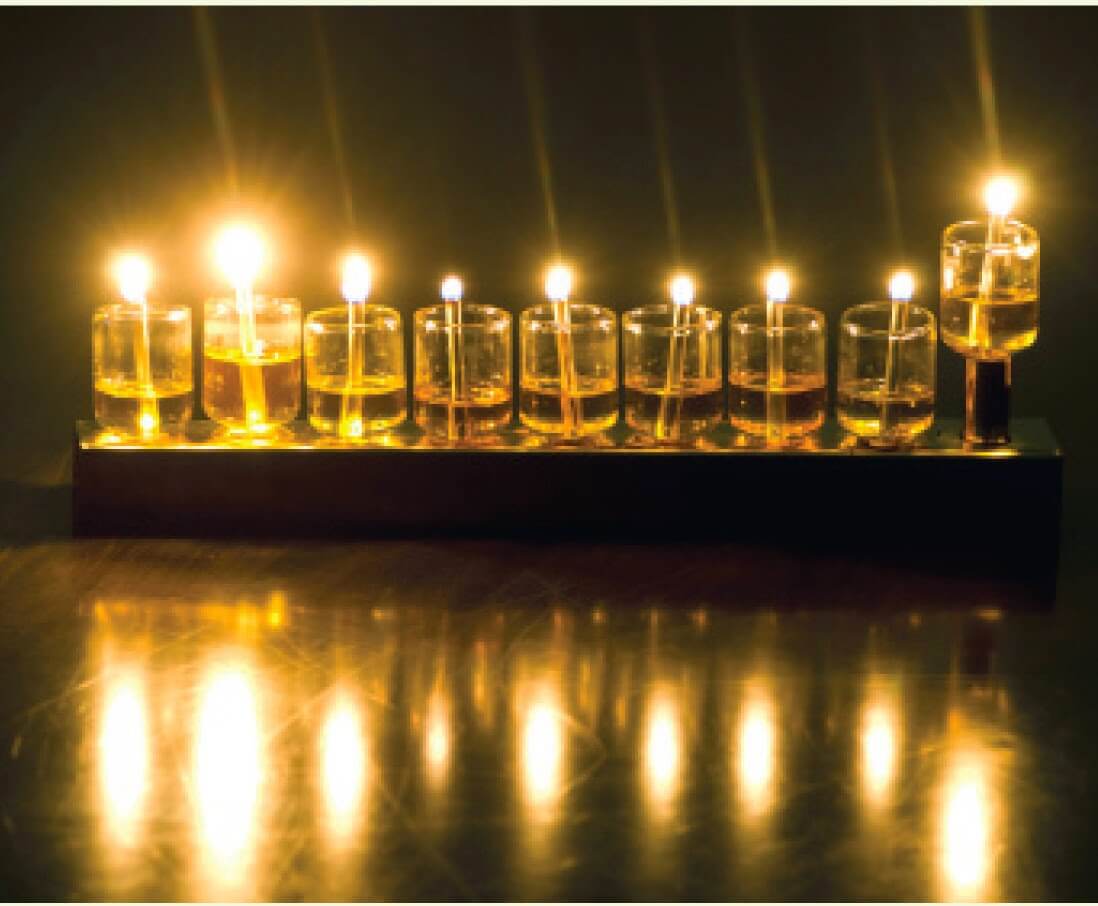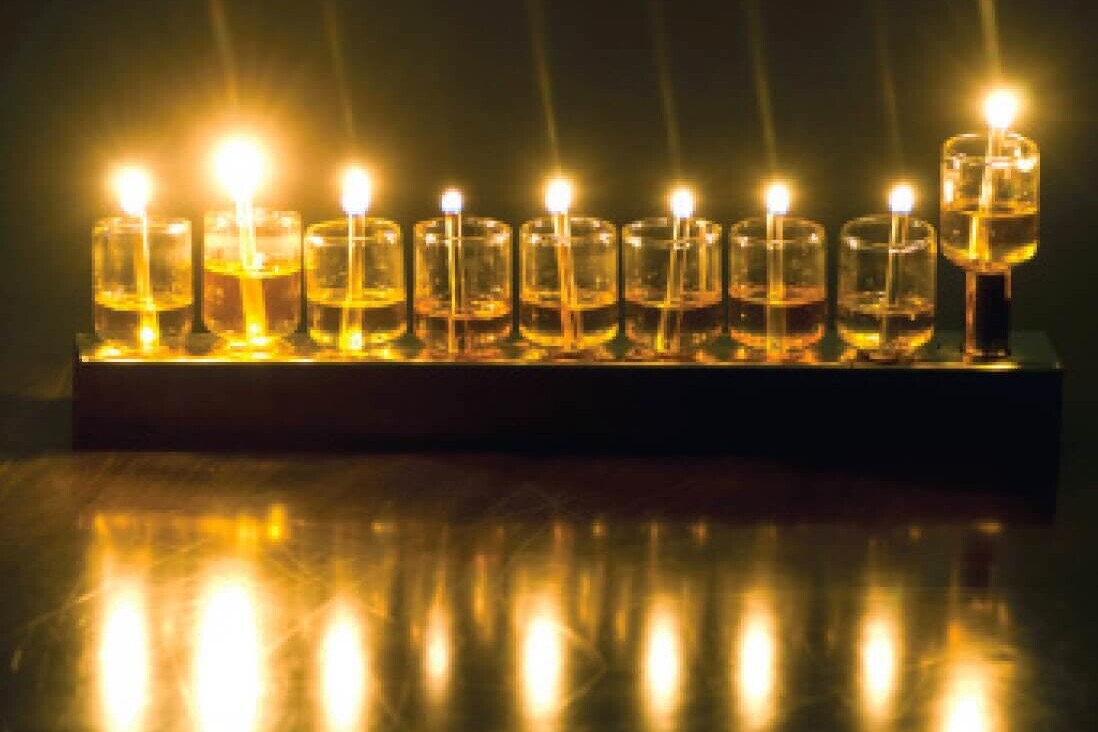The term menorah is used for both the classic symbol of the holiday of Chanukah and the great seven-branched candelabra that was built in the wilderness following explicit Divine directions and used first in the Tabernacle and later stood in the Holy Temple in Jerusalem.
In order to make a distinction between these two menorot, the term chanukiyah is sometimes used in reference to the Chanukah menorah. It has nine branches – eight lights for Chanukah and a shamash, a “helper” candle to light the other candles.
In preparation for the holiday and to make Chanukah truly shine, Jewish Treats presents some “things to know” about the chanukiyah:
1) You really don’t need a chanukiyah (or a menorah)! That’s right, one could technically light a series of tea lights (for example) one next to the other and still properly fulfill the mitzvah of Chanukah lights.
2) The lights should be in a straight line without any difference in height between any of the Chanukah lights. They may be in a semi-circle as long as all the lights are visible at the same time. The place for the shamash on the chanukiyah, however, should be differentiated from the other lights. Usually it is higher, lower or out of line with the others.
3) There should be enough space between lights so that the none of the flames merge with their neighbor. Also the candles must be far enough apart that one candle does not cause the candle next to it to melt.
4) It is preferable to use olive oil for the Chanukah lights since the miracle took place with olive oil. One may, nevertheless, use wax or paraffin candles or other types of oils as long as they produce a steady, clean light.

This Treat was last posted on November 27, 2013.
Copyright © 2014 NJOP. All rights reserved.
Related Posts
The Chanukiyah
The term menorah is used for both the classic symbol of the holiday of Chanukah and the…
0 Comments2 Minutes
The Chanukiyah
The term menorah is used for both the classic symbol of the holiday of Chanukah and the…
0 Comments2 Minutes
The Chanukiyah
The term menorah is used for both the classic symbol of the holiday of Chanukah and the…
0 Comments2 Minutes
 Print This Page
Print This Page
